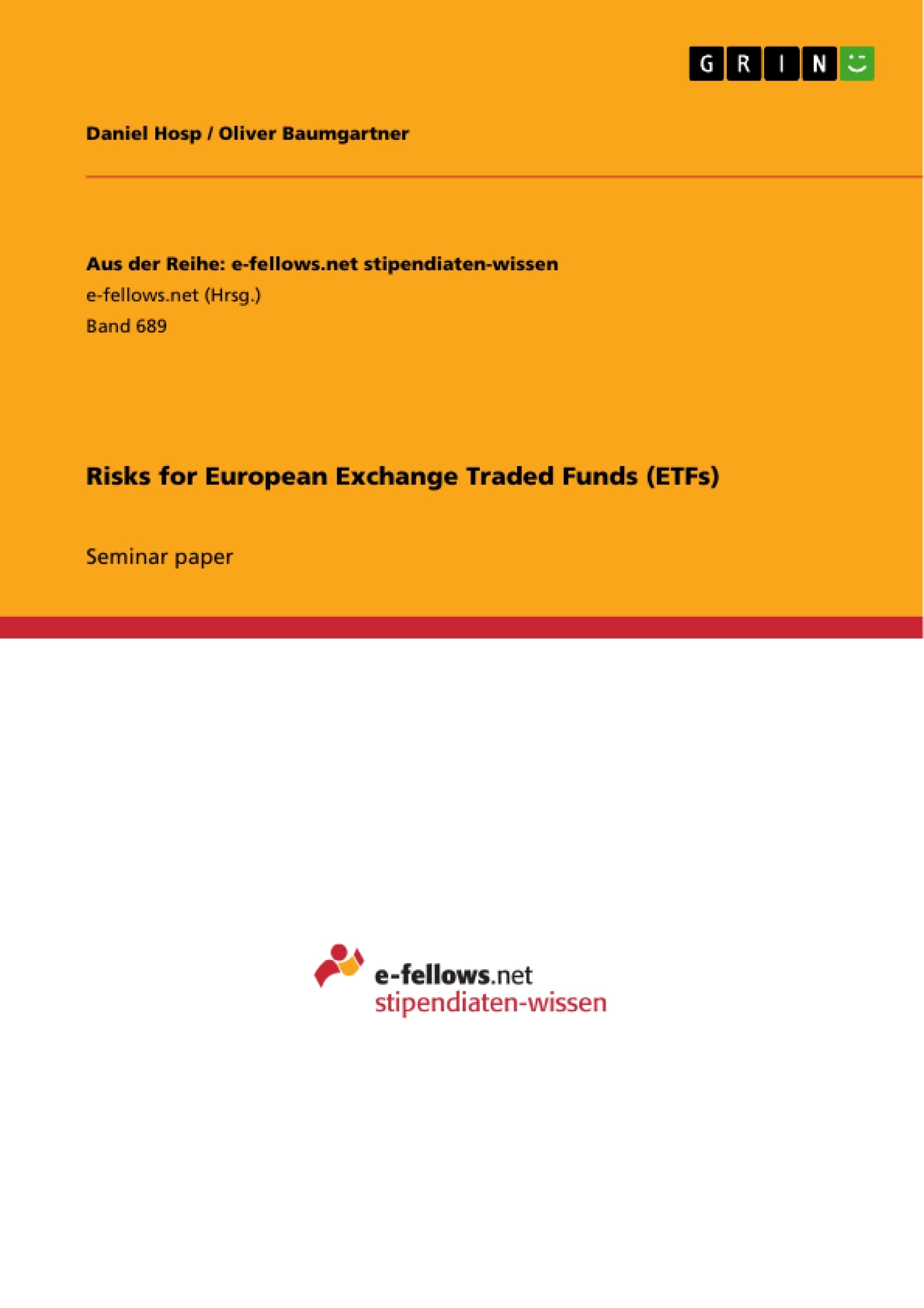Exchange Traded Funds are one of the most successful and promissing innovations in financial markets in the last decades. In contrast to most other finance innovations ETFs are especially beneficial for private investors. Nevertheless some developments took place creating mostly unknown risks for those who decided to invest into them.
This paper should provide a basic understanding of all risks that can be involved in the ETF market. Furthermore, there is a focus on some regulatory rules for such funds. The paper is divided into 4 main parts. First, there is a basic explanation about ETFs and how they work. Second, we show the development of the last few years of the ETF market. The focus of our work lies on the third part which deals with the Risk of ETFs. Risks that are explained are: counterparty, liquidity and leverage risk. Fourth, there is summary of regulations of ETFs which are created by IOSCO and ESMA. Finally, there is a short conclusion which summarizes the whole seminar paper in a few words.
Inhaltsverzeichnis (Table of Contents)
- Explanation of ETFs
- Development of the ETF market
- Risk's for ETFs
- Counterparty risk
- Liquidity risk
- Leverage risk
- Regulation
- Conclusion
Zielsetzung und Themenschwerpunkte (Objectives and Key Themes)
This seminar paper offers a comprehensive analysis of exchange-traded funds (ETFs), focusing on the risks and regulatory frameworks that impact their operation. The paper aims to provide readers with a basic understanding of ETFs, their development, and the associated risks.
- Fundamentals of ETFs: The paper explores the basic mechanics of ETFs, their advantages and disadvantages, and how they differ from traditional mutual funds.
- Evolution of the ETF Market: The paper traces the growth of the global ETF industry, highlighting the increasing popularity of various ETF types and the shift towards synthetic ETFs in Europe.
- Risks Associated with ETFs: The paper delves into the key risks associated with ETFs, including counterparty risk, liquidity risk, and leverage risk.
- Regulatory Landscape for ETFs: The paper summarizes the regulatory framework surrounding ETFs, focusing on the roles of IOSCO and ESMA in shaping the industry.
Zusammenfassung der Kapitel (Chapter Summaries)
- Chapter 1: Explanation of ETFs: This chapter provides a foundational understanding of ETFs, their basic structure, and their advantages and disadvantages. It compares ETFs to traditional mutual funds and discusses the role of derivatives in ETF construction. The chapter also explains the concept of indicative net asset value (iNAV) and how it relates to ETF pricing.
- Chapter 2: Development of the ETF market: This chapter examines the growth of the global ETF industry, highlighting the motivations behind the increasing popularity of these financial instruments. It explores the diverse range of ETF types, including leveraged ETFs and reverse ETFs, and sheds light on the increasing adoption of synthetic ETFs, particularly in Europe.
Schlüsselwörter (Keywords)
The paper revolves around the key concepts of exchange-traded funds (ETFs), financial markets, risk management, regulation, and investment strategies. It delves into specific risks associated with ETFs, including counterparty risk, liquidity risk, and leverage risk. The paper further examines the regulatory frameworks established by IOSCO and ESMA to govern the ETF industry.
- Citar trabajo
- BSc Daniel Hosp (Autor), Oliver Baumgartner (Autor), 2013, Risks for European Exchange Traded Funds (ETFs), Múnich, GRIN Verlag, https://www.grin.com/document/211865




